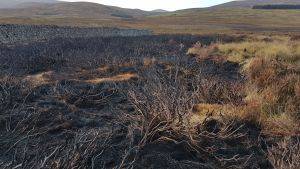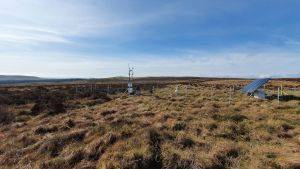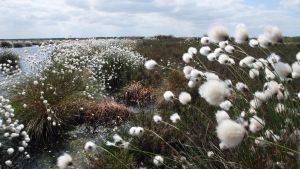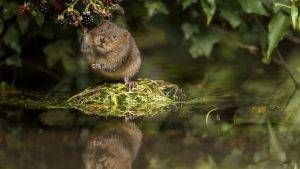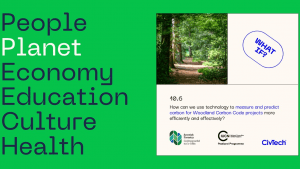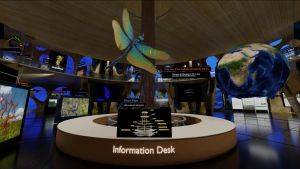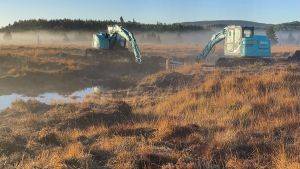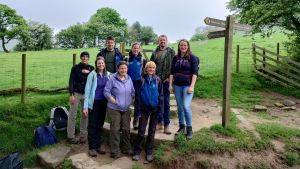We must triple the area of peatlands in the English uplands in restoration management by 2020.
So says a coalition of conservation organisations and water companies, who are calling on Government to increase commitment and resources so that our uplands can thrive with wildlife and provide the carbon, water and other environmental services that healthy bogs deliver.
Site visits and Westminster meetings with MPs are underway, together with the prospect of a Westminster Hall debate to raise the issue across Government. To help get the key messages across, the RSPB has produced a short infographic style report with some key facts and figures about the English uplands, their condition and the costs and benefits of restoration, and the much better value society should be getting from the public investment in the English uplands.

Intensive burning and drainage measures on a Natura 2000 deep peatland site in the Pennines
The partnership, which include the RSPB, the National Trust, The Wildlife Trusts, CPRE and others, calls upon Defra to:
- Work to bring England’s upland peatlands back into the condition that will maintain the vital ecosystem services these habitats provide for society
- Support and play its part in the IUCN’s UK Peatland Programme’s target for 1 million hectares (200,000 ha in England) of healthy and well-managed upland peatlands by 2020, and the Committee on Climate Change’s call to triple the area of upland peatland being restored
- Develop capital funding for peatland restoration, through a combination of public and private contribution and partnerships, commensurate with the above scale of ambition for upland peatland restoration
- Secure funding to ensure ongoing well-managed upland peatlands through a combination of rural funding and market related funding routes, including the practical development of innovative routes including the Peatland Carbon Code.
- Work to swiftly adopt a methodology for estimating carbon fluxes from peatlands in common with other UK countries, include peatland carbon in greenhouse gas inventories and voluntarily include peatlands in the UK’s Kyoto Protocol reporting
The initiative helps the IUCN’s drive to have one million hectares of healthy and well-managed upland peat in the UK by 2020. As well as the wildlife interests of the nature conservation organisations, the water companies are increasingly aware of the ecosystems services peatlands can bring to their catchment areas. There are climate change benefits from turning carbon sources into sinks. Revitalising the land involves local people and contributes to local businesses and sustainable communities. The partnerships that have started this renewal need to grow and reach out over much larger areas, especially across our National Parks and Areas of Outstanding Natural Beauty.
Government has a vital role in making this widespread recovery happen. This is already recognised in existing funding and support for upland restoration. NELMS provides the opportunity to greatly improve the public benefits from agri-environment money spent in the uplands.
Scotland has an ambitious programme of peatland restoration already underway, with £15 million of extra funding over two years, and Wales now has a concerted plan for restoring its peatlands. Action in England is lagging and much needed: pump-priming through capital investment, nurturing partnerships among different uplands interests, and developing both public and private funding. All of these are essential to expand peatland regeneration in England – a sound investment to reduce greenhouse emissions and gain wide society benefits from
The partner organizations in this initiative are: RSPB, National Trust, the Wildlife Trusts, Buglife, Campaign for National Parks, CPRE, Dartmoor Mires Project, Exmoor Mires Project, John Muir Trust, North Pennines AONB, South West Water, Wildfowl and Wetlands Trust, and United Utilities.
Please click on link below to read the report

